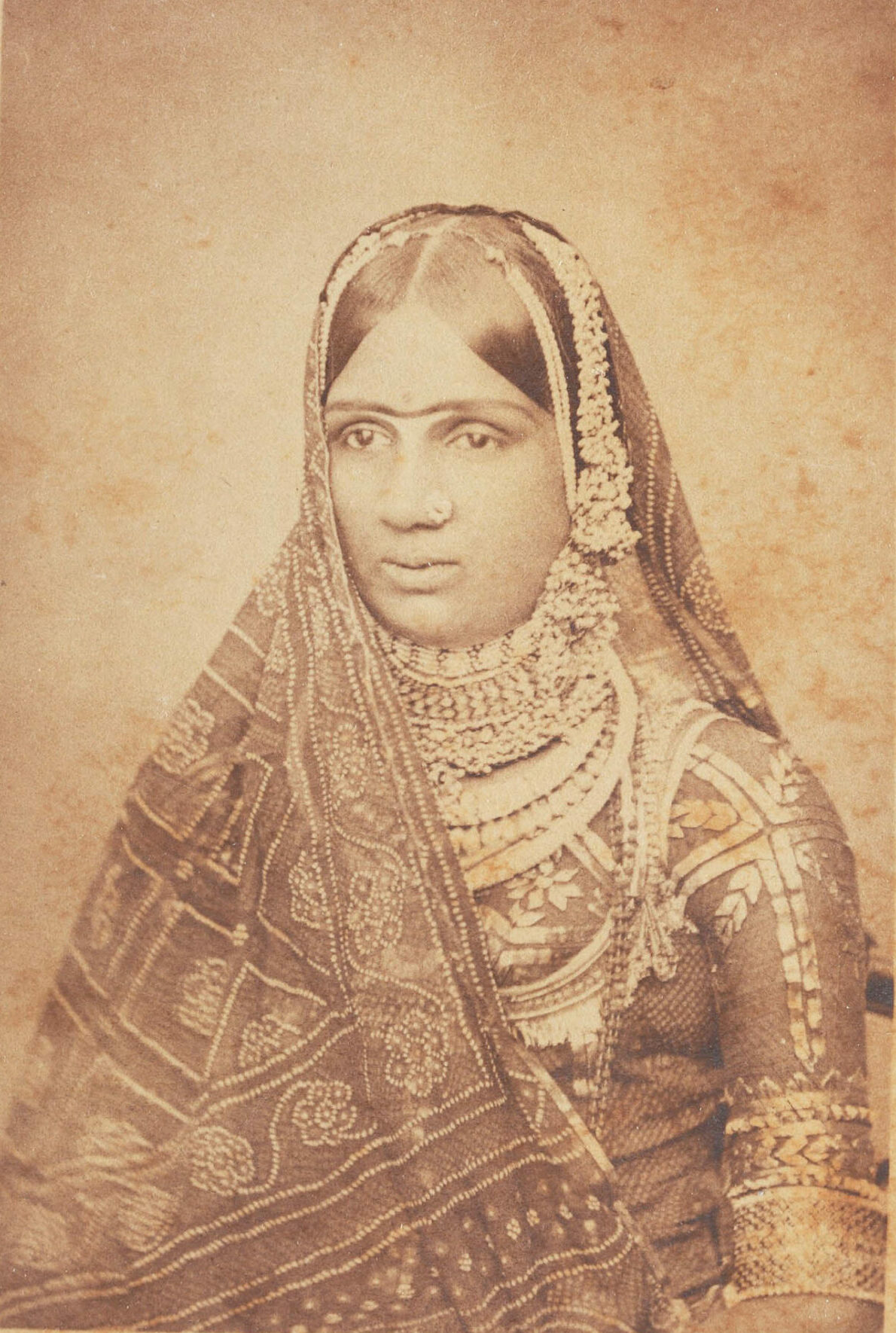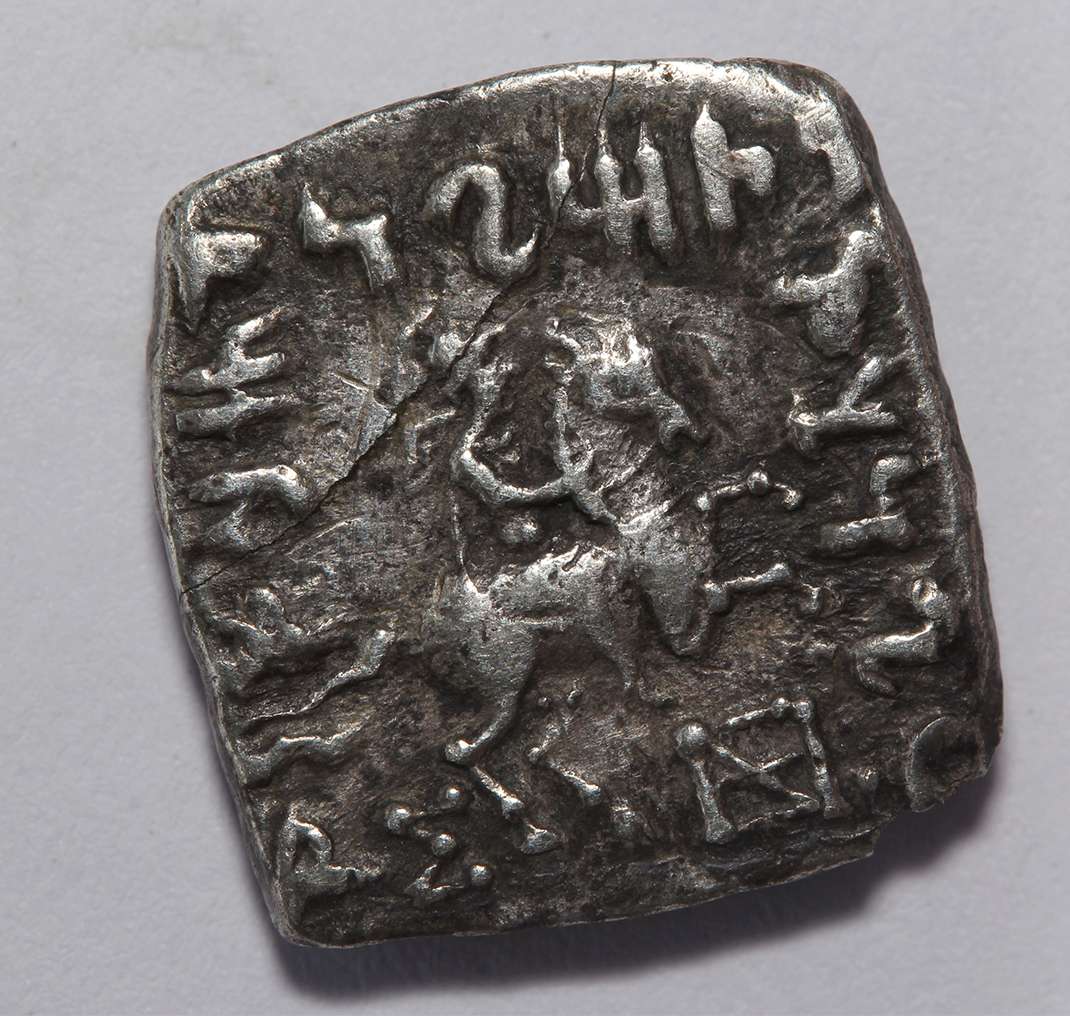All images © Sarmaya Arts Foundation
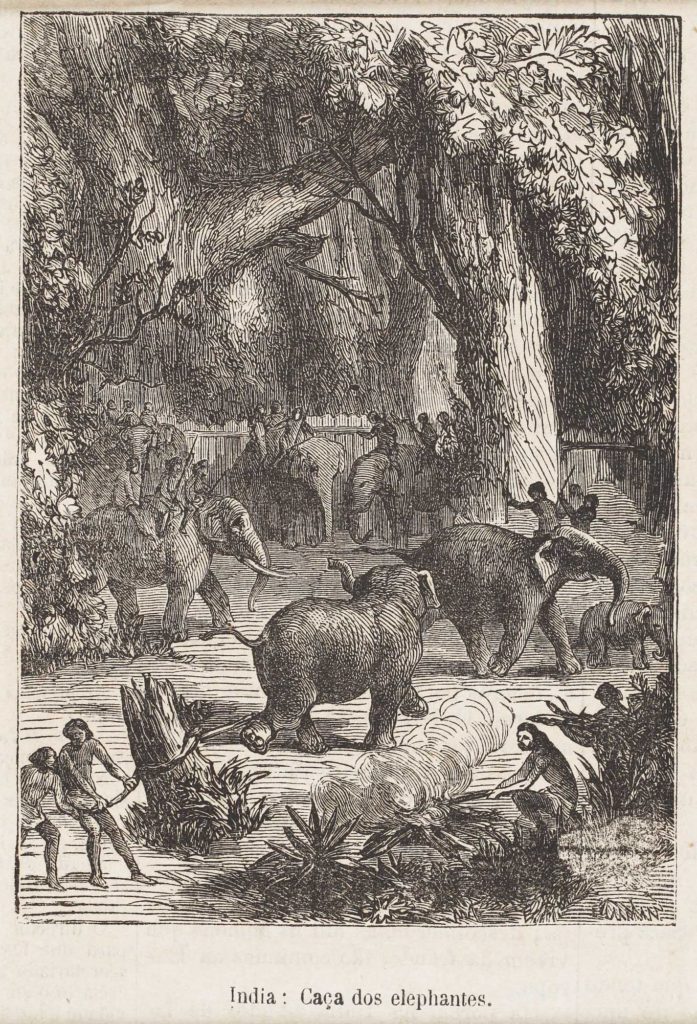
‘India, Caca dos elephantes’, monochrome lithograph on paper by an unknown artist
Some of us might relate to growing up at a time when Sundays meant watching ‘devotional’ shows on Doordarshan and witnessing an epic episode from Hindu mythology, called the Samudra Manthan. It was essentially a fight between good and evil as represented by the devas and asuras, over the elixir of immortality in the search of which they churn the cosmic ocean. A mountain becomes the rod, a snake the rope and the opposing sides tug away for eons.
This churn births some of the most fantastic things ever: ‘halaahal’ the poison that Lord Shiva swallows, Lakshmi and the apsaras (on whom the devas quickly called dibs) and Chandra, the moon. Among all these shiny, fancy things is a little white elephant called Airavata, who later goes on to become the mount of Lord Indra.
The Samudra Manthan is a product of the immensely rich Indian traditions of myth-making and storytelling, but it serves to underscore our fascination with these majestic pachyderms. In our stories, we turn a regular elephant into a magical creature, situate it at a time before ‘time’ itself and make it a part of our collective consciousness. In our subcontinent, the ele-philia is real.
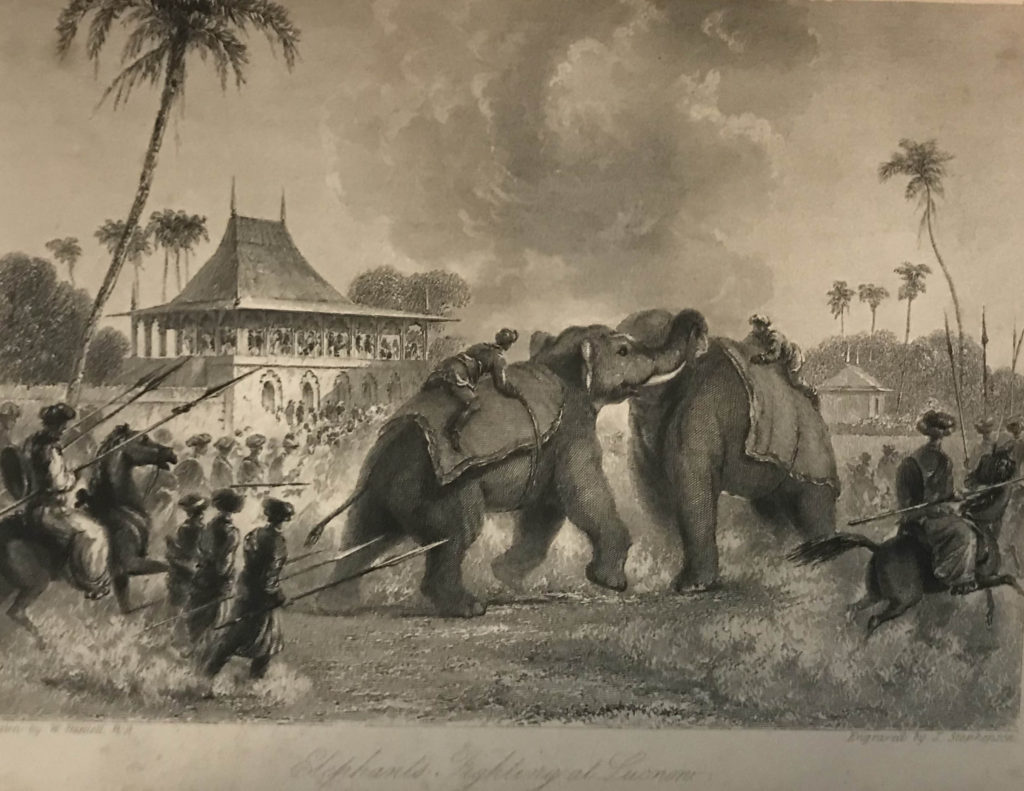
‘Elephant Fight Lucknow’, an engraving by J Stephenson after a drawing by William Daniel, from ‘The Oriental Annual’ by Rev. Hobart Caunter
The Asian elephant, Elephas maximus, shares a long and complex history with humankind. Its remarkable evolution as a cultural symbol is primarily due to its enormous utility coupled with its ability to generate fear and awe. At significant points in human history, the elephant variously served as a source of food, an almost-invincible war machine and a beloved deity.
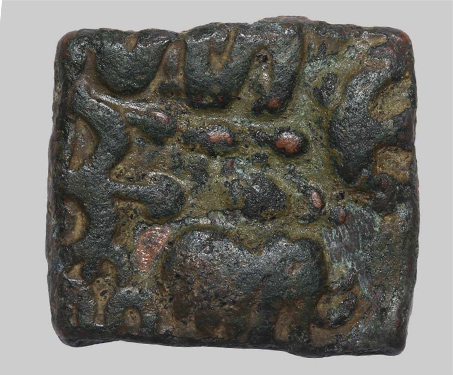
Un-inscribed copper coin with elephant insignia from the Chera dynasty, 100 BCE to 250 CE—click to see the object
The earliest evidence so far of elephant-human interaction comes from the Indus Valley Civilization, some 3000 years ago. Among the discoveries of the material culture of this civilisation are tiny elephants made of clay, bronze elephants on mini-chariots and elephant impressions on seals. Beginning around 3500 BCE, the elephant has continuously appeared in the art, architecture, iconography, folklore and literature of the Indian subcontinent.
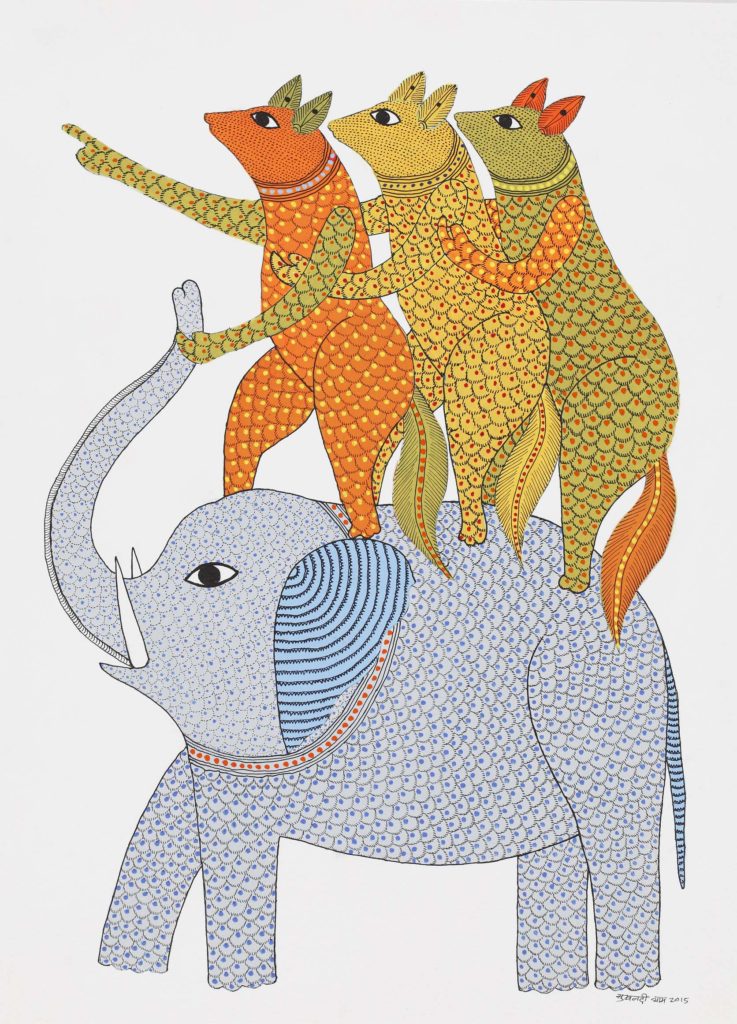
Three mice on an elephant by Sukhnandi Vyam, ink and acrylic on paper, Gond Pardhan School
Much before the familiar figure of Ganesha emerged in the Hindu pantheon, the elephant was already gaining ground as a formidable war machine being employed by the Mauryas and the Kushana rulers in the 1st century. It was only in the 5th to 6th centuries that the part-human, part-animal, overall-divine figure of the elephant god was created and incorporated into Puranic Hinduism. The iconography of Ganesha derives from the universal symbol for power and strength, not just physical but also mental and spiritual. In his elephant-headed human body, Ganesha embodies both the microcosm (the manifest in the human body) and the macrocosm (the unmanifest in the elephant head). Religions other than Hinduism also have had a long history with this animal: an elephant enters the womb of Maya before Buddha’s birth, the same story is followed for Mahavira’s birth in Jainism and Sikh scriptures often refer to the ‘elephant mind’.
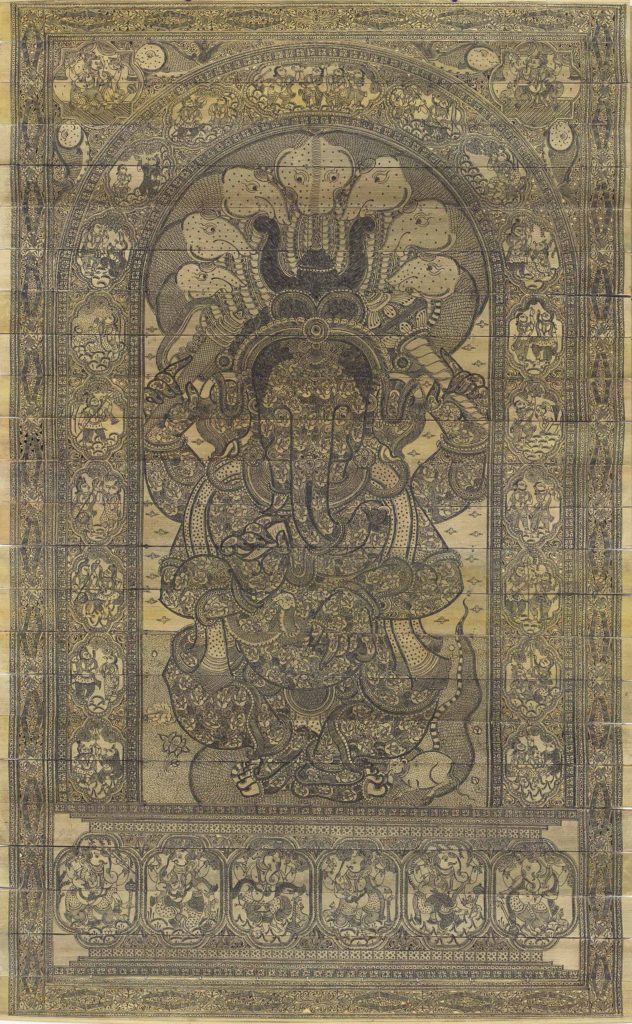
Tala pattachitra composed of 108 Ganeshas by Akshay Kumar Bariki
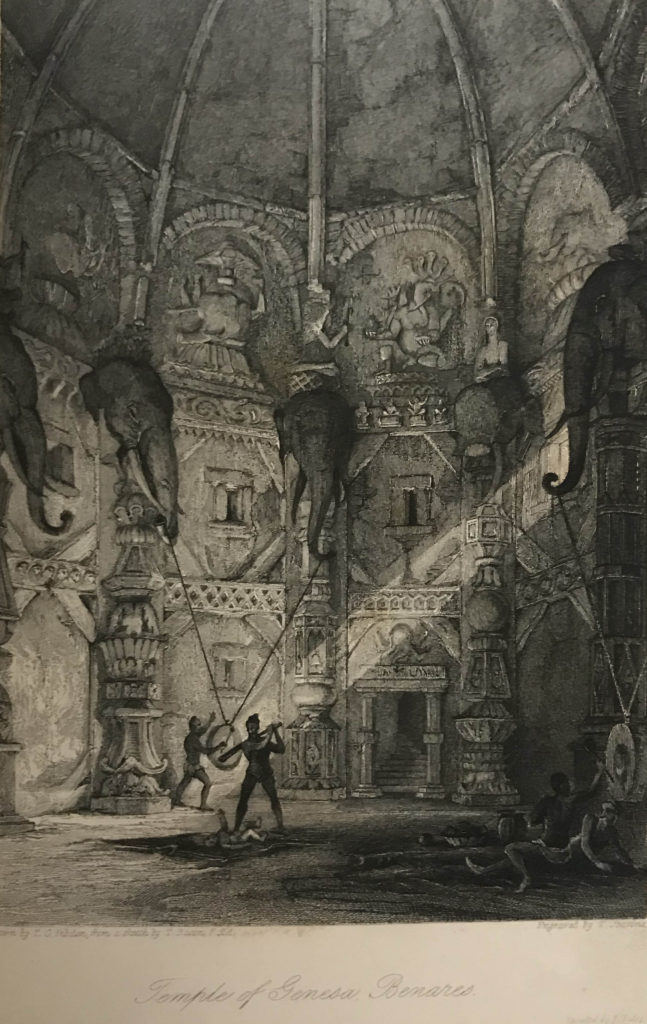
‘Temple of Ganesa, Benares’ from ‘The Oriental Annual or Scenes in India’ by Rev. Hobart Caunter
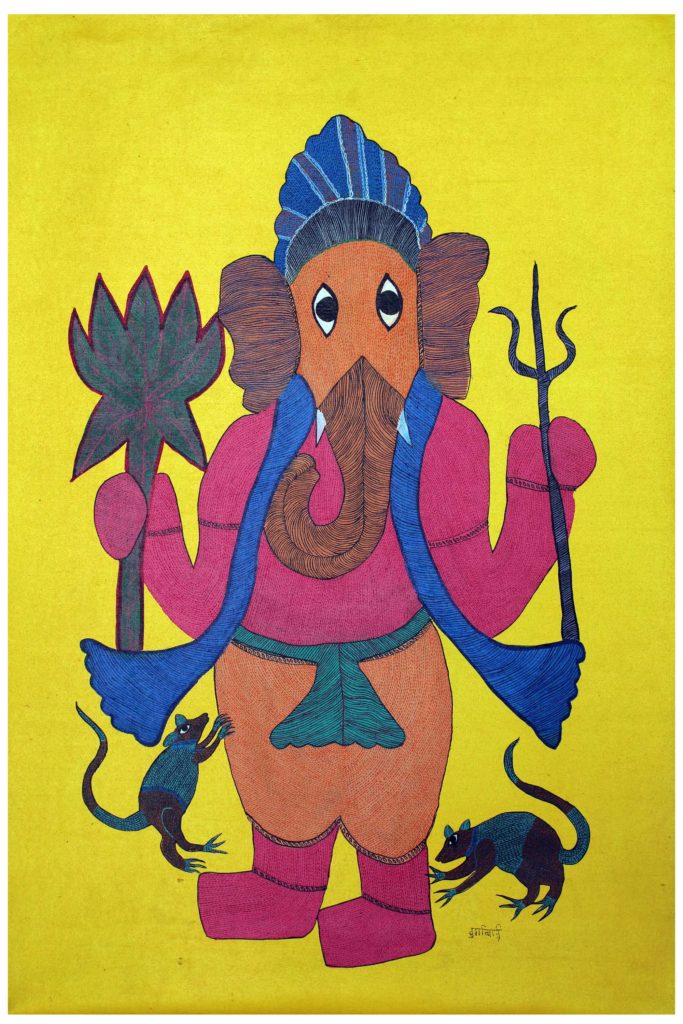
Ganesha by Durgabai Vyam, print on canvas, Gond Pardhan School
What made the elephant ubiquitous, however, was not its divine aspect but its utilitarian values. The royals of pre-modern India used the animal as a beast of burden and a tool of war. The usually calm, composed animal could also be roused to go on a murderous rampage, making it indispensable to the royal entourage. The Delhi sultans’ pilkhanas (elephant stables) were well-renowned, and regularly acquired land through plunder or as tribute. In the Mughal world, Emperor Akbar was particularly fond of elephant and is reputed to have over 5,000 in his stables. Kings had their favourites too, like Hawa’i of Akbar and Atash Khan of Ibrahm Adil Shah II, that found themselves immortalised in courtly literature and miniature paintings. Elephant imagery began to be used in royal insignias across the regions of India.
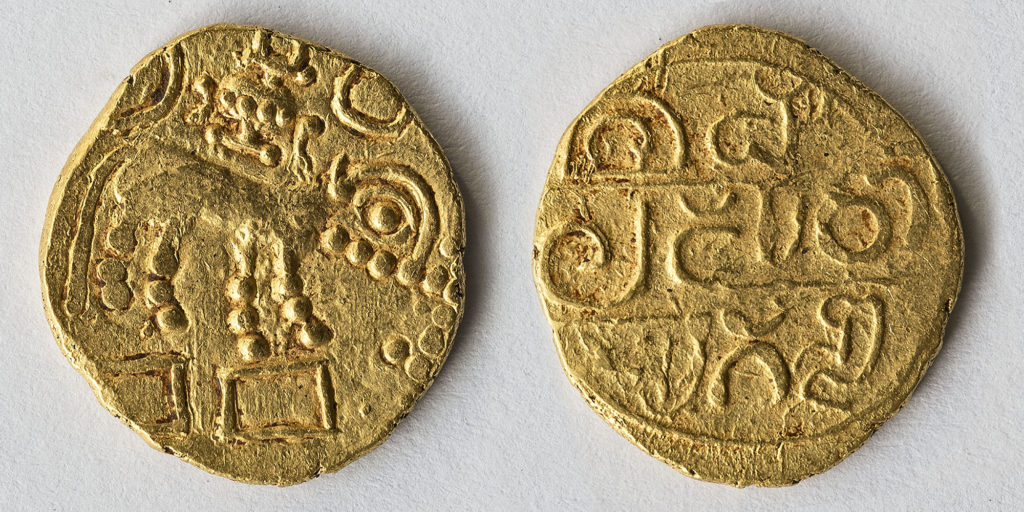
Gold Pagoda type coin issued by Vinayaditya of the Hoysala dynasty, 10th century CE
In the 18th century, with the coming of the British who were huge elephant enthusiasts, the animals were used in unprecedented numbers. As the empire grew in strength, elephants were employed by forest offices, railways departments, trading factories and the armed forces, and ensured that the colonial machinery ran smoothly.
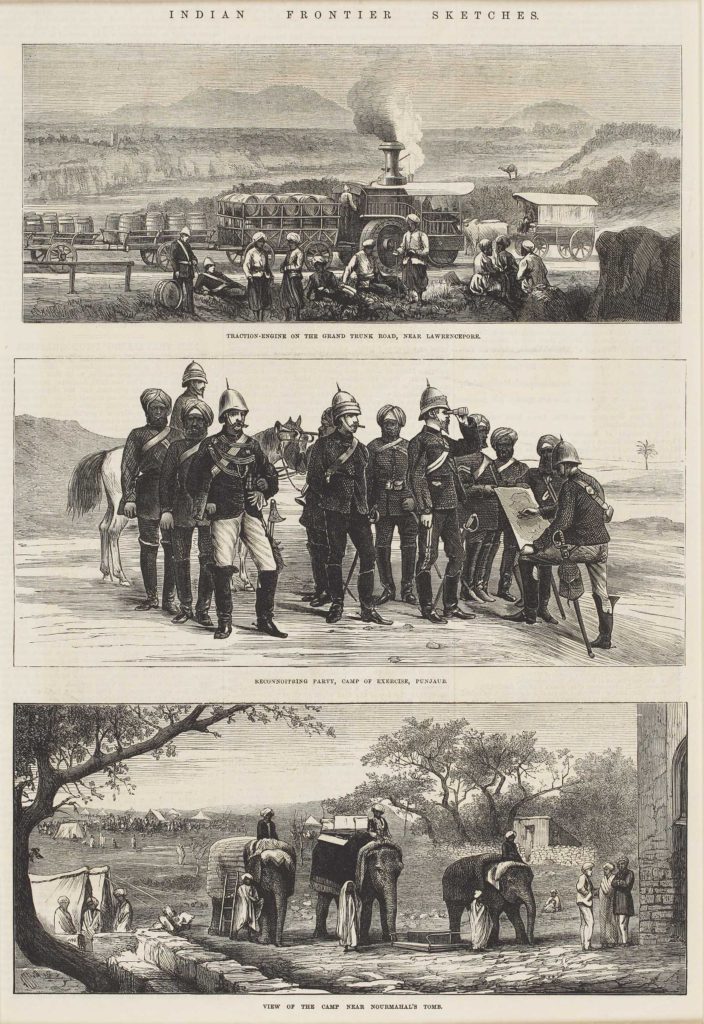
‘View of the Camp near Nourmahal’s Tomb’, monochrome lithograph on paper by unknown artist
A lot of the ele-education that the British received in India was from long-drawn Indic traditions, primarily Mughal. They also continued the trend of naming their favourites and providing them with special favours and ranks (see image below of the Curzons). In the late 18th century, the British developed relations with the zamindars of Bengal (Dhaka and Sylhet district) who regularly supplied elephants to their Mughal rulers as tribute, and established a network of supply with them. There was a standardized procedure of capture, trade, survey and upkeep that was diligently maintained throughout the country, and one of the most important officers employed in Bengal was the ‘Superintendent of the keddah’, which referred to the enclosures built to trap elephants. Besides the practical use, they also provided entertainment to visiting British noblemen who enjoyed going on tiger hunts on the backs of the fearsome creatures. The rise of the international ivory market only increased the demand for the poor animals.
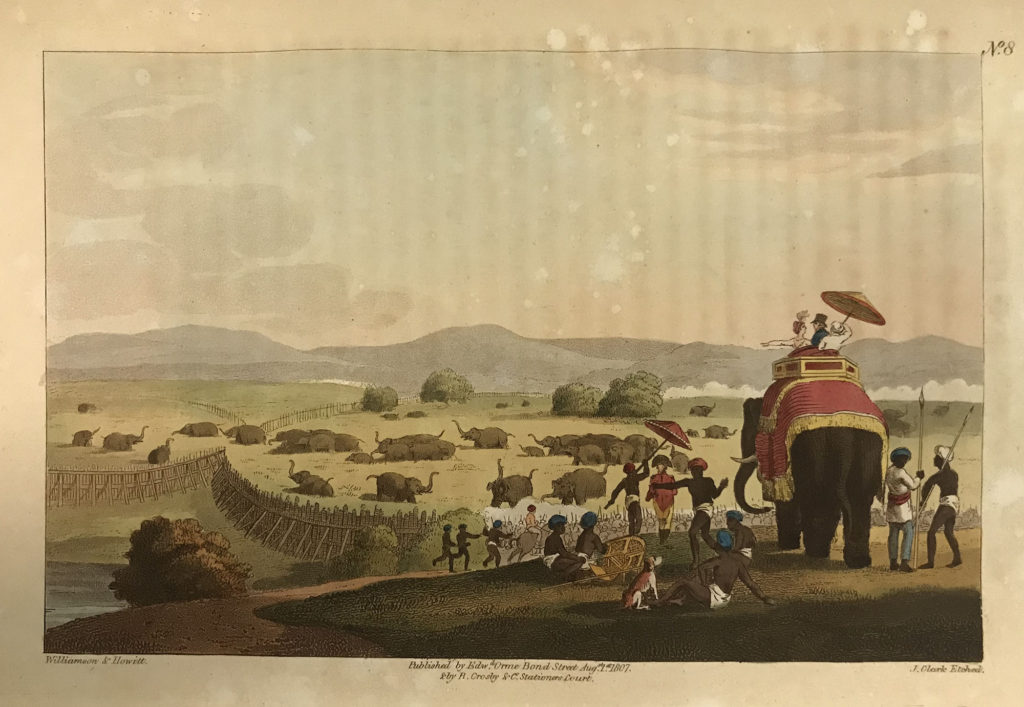
An etching by J Clark after a drawing by Samuel Howitt from ‘Oriental Field Sports’ by Thomas Williamson, 1819
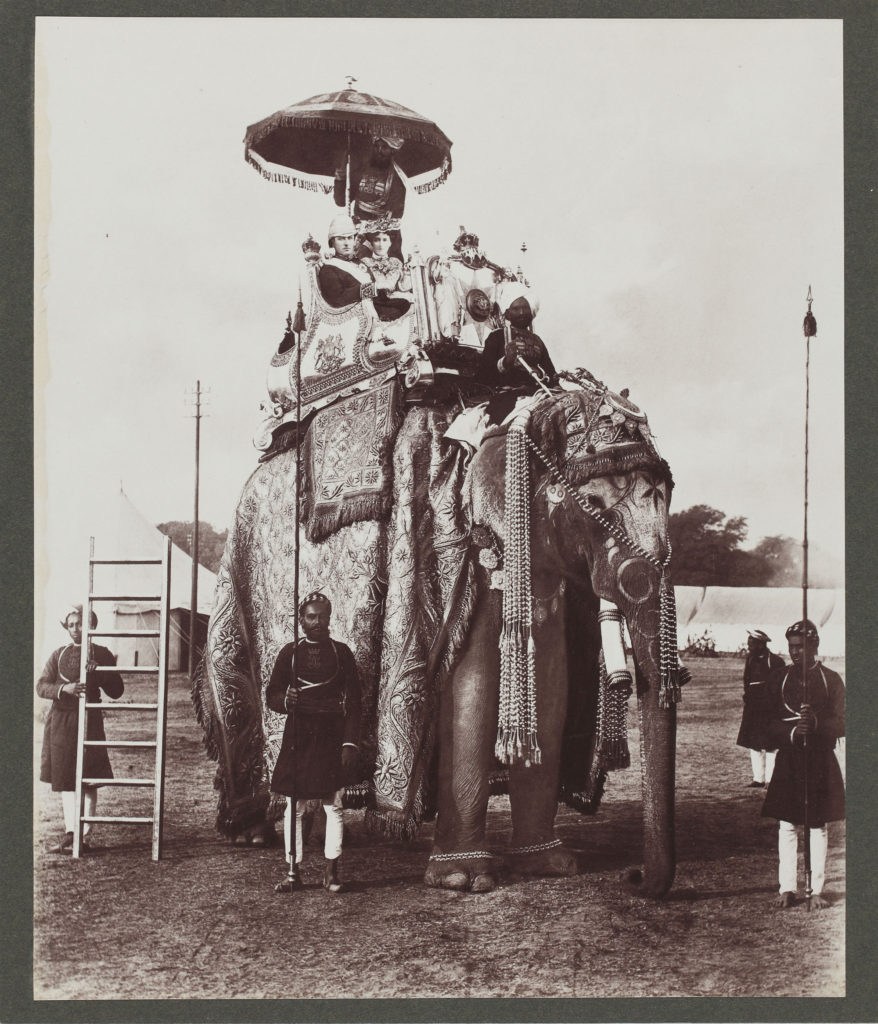
A photograph of Lord and Lady Curzon on the elephant Lakshman Prasad, 29 December 1902
The pervasiveness of the elephant that the Britons observed in this country continues into 21st-century India. Where it once codified the entire realm of the ‘exotic east’ on colonial maps and engravings, today the figure of the elephant can be seen in brand logos, design motifs and even in contemporary art canvases, proving that the symbol has not lost any of its potency over centuries of use. Modern science and research has only added to the list of virtues associated with this incredible megafauna. Now, besides strength, integrity, grandeur and power, Elephas maximus also represents intelligence, sensitivity and camaraderie. It seems that the longer we walk alongside these fascinating giants, the more we find to love and admire.
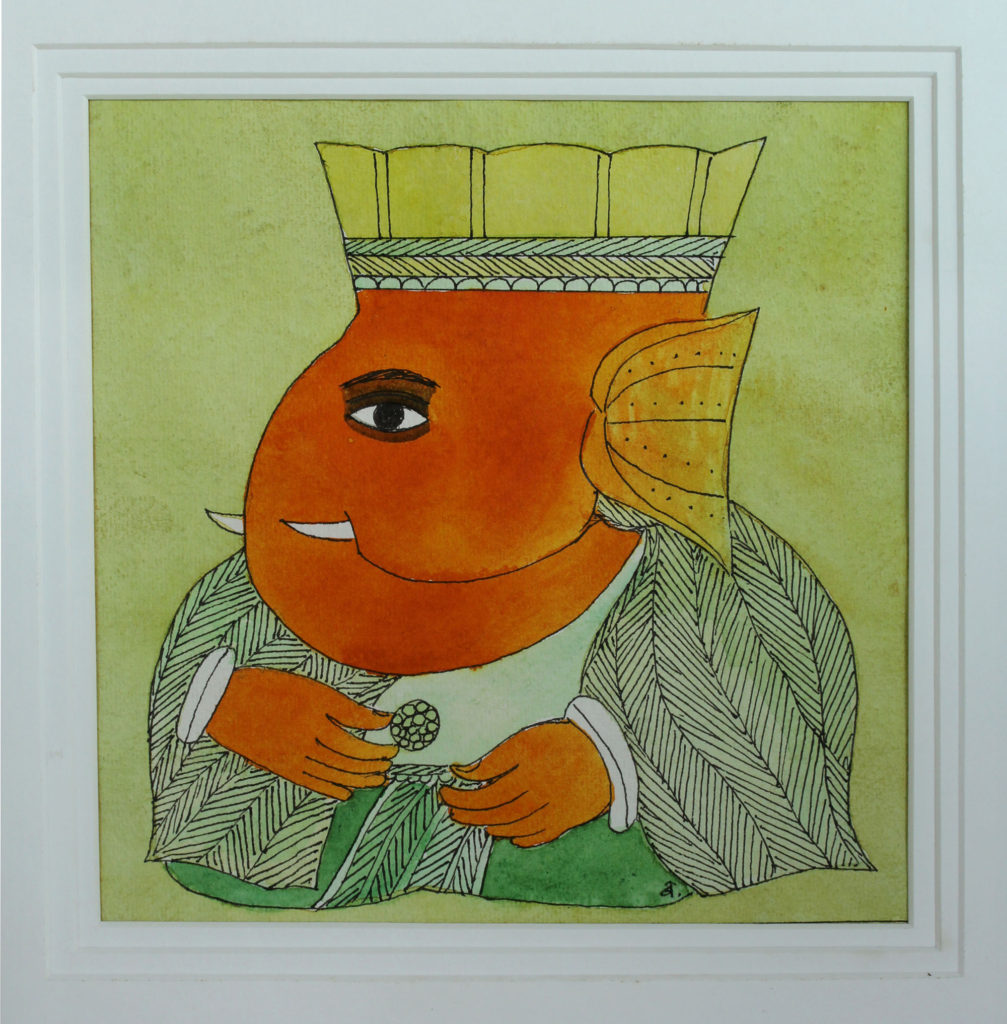
Ganesha by Badri Narayan, watercolour and ink on paper, 2005
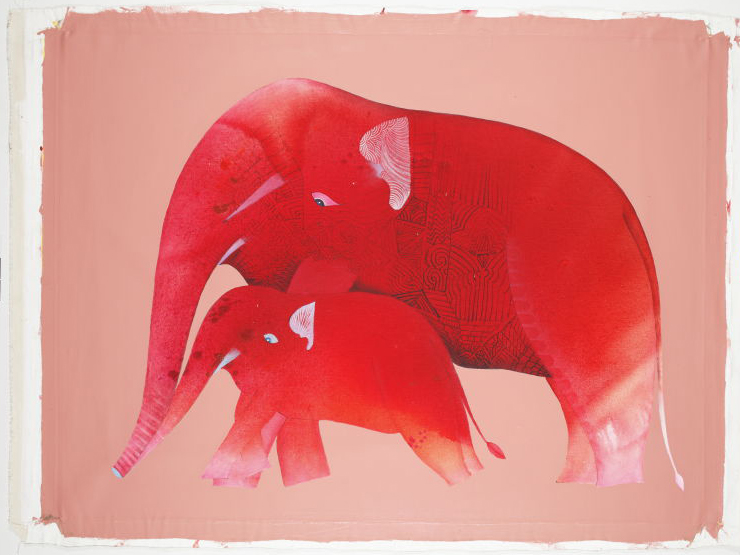
Elephant by Babu Xavier, watercolour on paper
Shubhasree Purkayastha is Curatorial & Research Associate at Sarmaya

